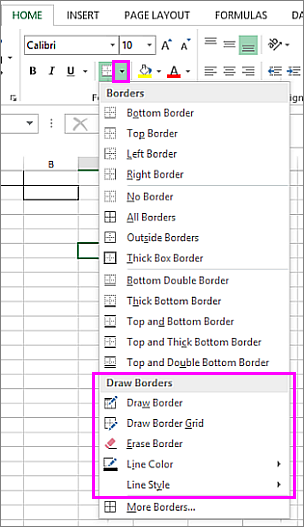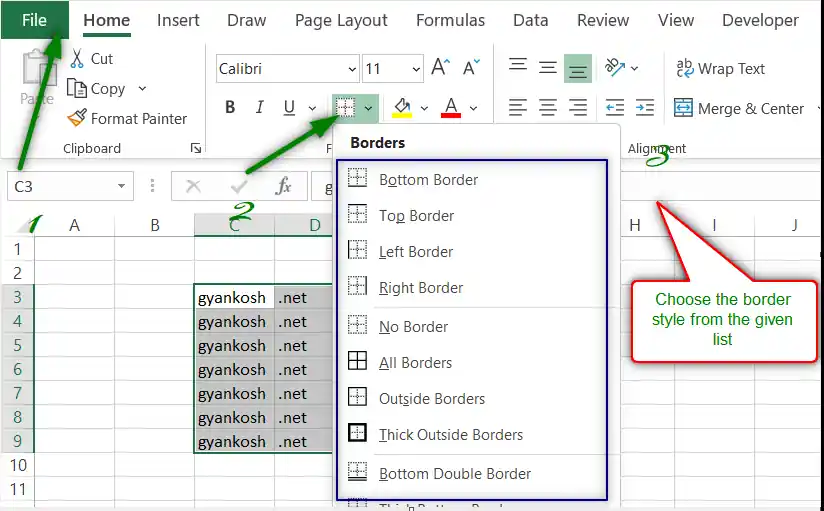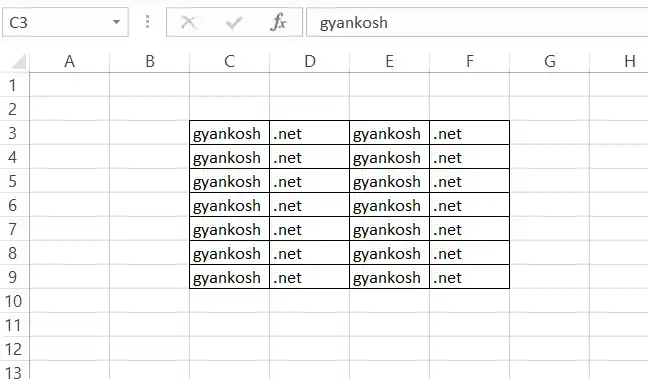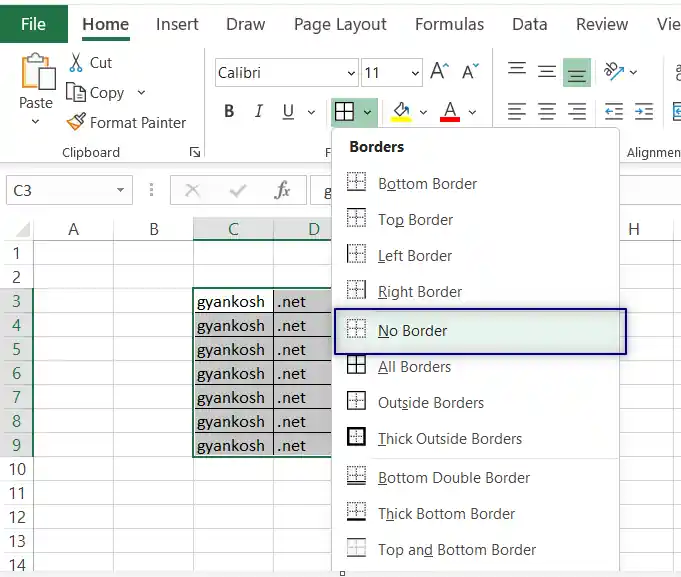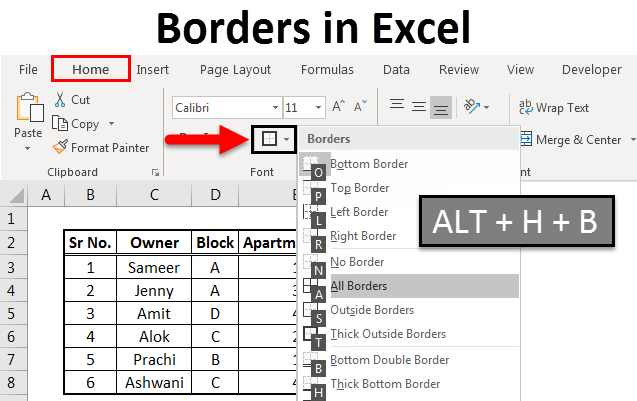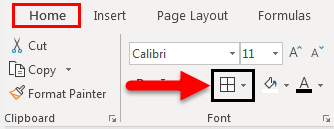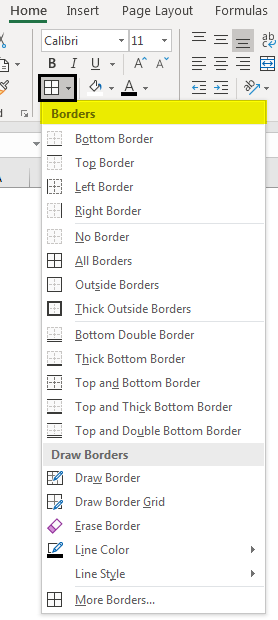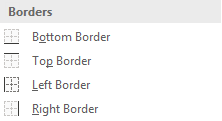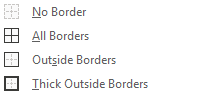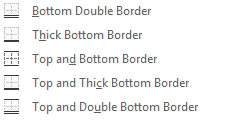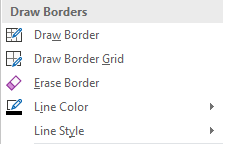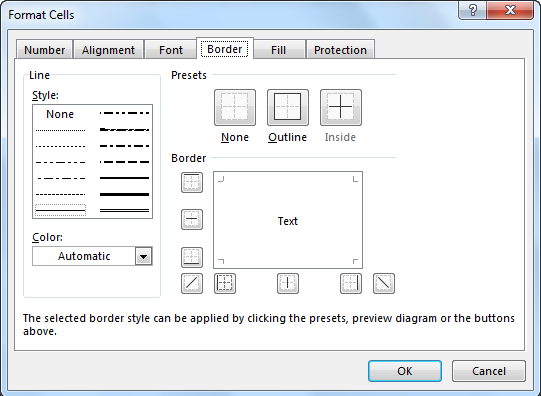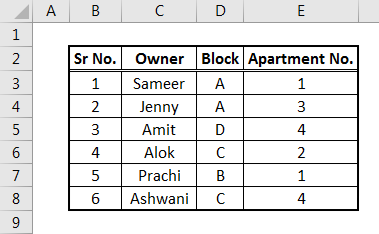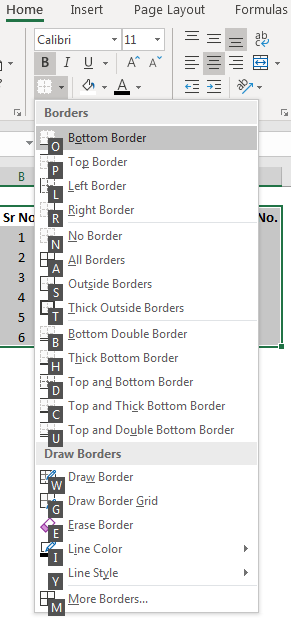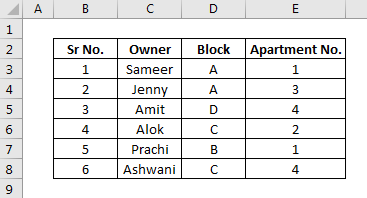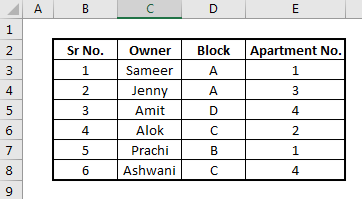Содержание
- How to create, change and remove border in Excel
- What are cell borders in Excel?
- How to create border in Excel
- How to insert border in Excel with Format Cells dialog
- Excel border shortcuts
- Add outside border
- Remove all borders
- Shortcuts for Format cells dialog
- How to draw borders in Excel
- How to create a custom border style in Excel
- How to change the color and width of cell borders
- Examples of cell border in Excel
- Outside border
- Top and bottom border
- Top and thick bottom border
- Bottom double border
- Inside and outside borders
- Creating borders in Excel — useful tips
- How to remove a cell border in Excel
- Remove all borders
- Erase individual borders
How to create, change and remove border in Excel

The tutorial shows how to border cells in Excel by using the predefined options and how to create your custom cell border style.
Sometimes Excel worksheets can be difficult to read because of dense information and complex structure. Adding border around cells can help you distinguish different sections, emphasize certain data, such as column headings or total rows, and make your worksheets better presentable and more attractive.
What are cell borders in Excel?
Border is a line around a cell or a block of cells in Excel. Generally, cell borders are used to accent a specific section of a spreadsheet to make it stand out. For example, you can insert a border to draw attention of viewers to totals or other important data on the sheet.
Please do not confuse cell borders with worksheet gridlines. Borders are ticker and more prominent. Unlike gridlines, cell borders do not appear in a worksheet by default, you need to apply them manually. When printing out a document, the borders will appear on printed pages regardless of whether you print gridlines or not.
Microsoft Excel offers a few different ways to add a border around a single cell or a ranges of cells. 
How to create border in Excel
The fastest way to make a border in Excel is to apply one of the inbuilt options directly from the ribbon. Here’s how:
- Select a cell or a range of cells to which you want to add borders.
- On the Home tab, in the Font group, click the down arrow next to the Borders button, and you will see a list of the most popular border types.
- Click the border you want to apply, and it will be immediately added to the selected cells.
For example, this is how you can apply an outside border around cells in Excel:
More examples of Excel cell borders can be found here.
- To apply a line colorand style other than defaults, choose the desired Line Color and/or Line Style under Draw Borders first, and then select borders.
- The Border button on the ribbon only provides access to outside border types. To access all available settings, including inside borders, click More Borders… at the bottom of the drop-down menu. This will open the Format Cells dialog box, which is explained in detail in the next section.
How to insert border in Excel with Format Cells dialog
The Format Cells dialog is the most effective method of adding borders in Excel. It gives you easy access to all the settings including the line color and thickness as well as a nice diagram preview.
To insert a border via the Format Cells dialog, this is what you need to do:
- Select one or more cells to which you’d like to add borders.
- Open the Format Cells dialog box by doing one of the following:
- Click the down arrow next to the Borders button, and then click More Borders at the bottom of the drop-down list.
- Right click the selected cells and choose Format Cells… from the context menu.
- Press Ctrl+1 shortcut.


Excel border shortcuts
To quickly insert and remove cell borders, Excel provides a couple of keyboard shortcuts.
Add outside border
To add an outline border around the current selection, press the following keys at the same time.
Windows shortcut: Ctrl + Shift + &
Mac shortcut: Command + Option + 0
Remove all borders
To remove all borders within the current selection, use the following key combinations.
Windows shortcut: Ctrl + Shift + _
Mac shortcut: Command + Option + _
Note. Excel border shortcut does not give you control over the line color and thickness. To create borders professionally, it is recommended to use the Format Cells dialog that provides full access to all the settings.
Shortcuts for Format cells dialog
On the Borders tab of the Format Cells dialog, you can also use the following shortcuts toggle borders on and off:
- Left border: Alt + L
- Right border: Alt + R
- Top border: Alt + T
- Bottom border: Alt + B
- Upward diagonal: Alt + D
- Horizontal interior: Alt + H
- Vertical interior: Alt + V
Tip. In case you are adding multiple borders, it is sufficient to press Alt just once, and then you can hit only the letter keys. For example, to place the top and bottom borders, press Alt + T , and then B .
How to draw borders in Excel
Instead of selecting cells first, and then choosing from a set of built-in options, you can draw borders directly on the worksheet. Here’s how:
- On the Home tab, in the Font group, click the down arrow next to Borders. Near the bottom of the drop-down menu, you will see the Draw Borders group of commands that let you choose a drawing mode, line color and style.
- First, pick a Line Color and a Line Style. Once either one is selected, Excel automatically activates the Draw Border mode, and the cursor changes to a pencil.
- You can now start drawing individual lines in the default Draw Border mode or switch to Draw Border Grid mode. The difference is as follows:
- Draw Border allows drawing a border along any gridline, which works great when making irregular borders. Dragging across cells will create a regular rectangular border around a range.
- Draw Border Grid places outside and inside borders at a time when you click and drag across cells. When you follow a gridline, a single line is added just like when using the Draw Border option.
- To stop drawing borders, click the Border button on the ribbon. This will force Excel to exist the drawing mode, and the cursor will change back to a white cross.
Tip. To delete the entire border or any of its elements, use the Erase border feature as describe in Erasing borders.
How to create a custom border style in Excel
In none of the predefined cell borders meet your needs, you can create your own border style. Here are the steps to perform:
- On the Home tab, in the Styles group, click Cell Styles. If you do not see the Cell Styles button, click the More button in the bottom right corner of the Styles box.
- Near the bottom of the drop-down menu, click New Cell Style.
- In the Style name box, type a name for your new cell style (Bottom double border in our case), and then click Format.
- The Format Cells dialog box will open. You switch to the Border tab and select the line style, line color and borders of interest. When done, click OK.
- In the Style dialog box, clear the boxes for any formatting that you do not want to include in the new style, and click OK. Done!
To apply your custom border style, just do the following:
- Select the cells you’d like to format.
- On the Home tab, in the Styles group, click the style you’ve created. Usually appears in the top left corner of the Styles box. If you do not see it there, then click the More button next to the Styles box, find your new style under Custom, and click on it.
Your custom style will be applied to the selected cells at once: 
How to change the color and width of cell borders
When you add a cell border in Excel, a black (automatic) line color and a thin line style is used by default. To change the color and width of cell borders, please follow these steps:
- Select the cells whose border you want to change.
- Press Ctrl + 1 to open the Format Cells dialog box. Or right-click the selected cells, and then click Format Cells in the popup menu.
- Switch to the Border tab and do the following:
- From the Line box, choose the desired style for the border line.
- From the Color box, pick the preferred line color.
- In the Presets or Border section, select your existing border type.
- Check the result on the preview diagram. If you are happy with the changes, click OK. If not, try another line style and color.

Examples of cell border in Excel
Below you will have a few examples of how your Excel borders may look like.
Outside border
To apply an outline border around cells, use either Outside Borders or Think Outside Borders option: 
Top and bottom border
To apply top and bottom border in Excel with a single command, use this option: 
Top and thick bottom border
To apply top and thick bottom border, use this one: 
Bottom double border
To place a bottom double border in Excel, use the below command. This option comes especially handy for separating a total row: 
Inside and outside borders
To place both inside and outside borders at a time, use the All Borders command:
To put only inside borders or use different colors and line styles for inside and outside borders, use either the Draw Borders feature the Format Cells dialog. The below image shows one of many possible results: 
Creating borders in Excel — useful tips
The following tips will give you some insight into Excel cell borders that may help you use them more efficiently.
- Each border that you add or change will follow the current settings for the line style and thickness. So, be sure to choose the line color and style first, and then select the border type.
- Unlike gridlines that may or may not be visible on printouts, cell borders always appear on printed pages.
- To have cell borders inserted automatically, format your data as an Excel table and choose from a rich collection of predefined table styles.
How to remove a cell border in Excel
Depending on whether you want to delete all or specific borders, use one of the following techniques.
Remove all borders
To delete all borders within a range, this is what you need to do:
- Select one or more cells that you wish to remove a border from.
- On the Home tab, in the Font group, click the arrow next to Borders, and choose No Border.

Alternatively, you can use the remove borders shortcut: Ctrl + Shift + _
If you choose to remove all formatting in Excel, this will also remove cell borders.
Erase individual borders
To remove borders one at a time, use the Erase Border feature:
- On the Home tab, in the Font group, click the arrow next to Borders, and choose Erase Border.
- Click each individual border that you want to delete. It’s also possible to erase all borders in one go. For this, click Erase Border and drag the eraser across cells.
- To exit the erasing mode, click the Border button.

That’s how to create and change borders in Excel. I thank you for reading and hope to see you on our blog next week!
Источник
Apply or remove cell borders on a worksheet
Excel for Microsoft 365 Excel for the web Excel 2021 Excel 2019 Excel 2016 Excel 2013 Excel 2010 Excel 2007 More…Less
By using predefined border styles, you can quickly add a border around cells or ranges of cells. If predefined cell borders do not meet your needs, you can create a custom border.
Note: Cell borders that you apply appear on printed pages. If you do not use cell borders but want worksheet gridline borders to be visible on printed pages, you can display the gridlines. For more information, see Print with or without cell gridlines.
-
On a worksheet, select the cell or range of cells that you want to add a border to, change the border style on, or remove a border from.
-
On the Home tab, in the Font group, do one of the following:
-
To apply a new or different border style, click the arrow next to Borders
, and then click a border style.
Tip: To apply a custom border style or a diagonal border, click More Borders. In the Format Cells dialog box, on the Border tab, under Line and Color, click the line style and color that you want. Under Presets and Border, click one or more buttons to indicate the border placement. Two diagonal border buttons
are available under Border.
-
To remove cell borders, click the arrow next to Borders
, and then click No Border
.
-
-
The Borders button displays the most recently used border style. You can click the Borders button (not the arrow) to apply that style.
-
If you apply a border to a selected cell, the border is also applied to adjacent cells that share a bordered cell boundary. For example, if you apply a box border to enclose the range B1:C5, the cells D1:D5 acquire a left border.
-
If you apply two different types of borders to a shared cell boundary, the most recently applied border is displayed.
-
A selected range of cells is formatted as a single block of cells. If you apply a right border to the range of cells B1:C5, the border is displayed only on the right edge of the cells C1:C5.
-
If you want to print the same border on cells that are separated by a page break, but the border appears on only one page, you can apply an inside border. This way, you can print a border at the bottom of the last row of one page and use the same border at the top of the first row on the next page. Do the following:
-
Select the rows on both sides of the page break.
-
Click the arrow next to Borders
, and then click More Borders.
-
Under Presets, click the Inside button
.
-
Under Border, in the preview diagram, remove the vertical border by clicking it.
-
-
On a worksheet, select the cell or range of cells that you want to remove a border from.
To cancel a selection of cells, click any cell on the worksheet.
-
On the Home tab, in the Font group, click the arrow next to Borders
, and then click No Border
.
—OR—
Click Home > the Borders arrow > Erase Border, and then select the cells with the border you want to erase.
You can create a cell style that includes a custom border, and then you can apply that cell style when you want to display the custom border around selected cells.
-
On the Home tab, in the Styles group, click Cell Styles.
Tip: If you do not see the Cell Styles button, click Styles, and then click the More button next to the cell styles box.
-
Click New Cell Style.
-
In the Style name box, type an appropriate name for the new cell style.
-
Click Format.
-
On the Border tab, under Line, in the Style box, click the line style that you want to use for the border.
-
In the Color box, select the color that you want to use.
-
Under Border, click the border buttons to create the border that you want to use.
-
Click OK.
-
In the Style dialog box, under Style Includes (By Example), clear the check boxes for any formatting that you do not want to include in the cell style.
-
Click OK.
-
To apply the cell style, do the following:
-
Select the cells that you want to format with the custom cell border.
-
On the Home tab, in the Styles group, click Cell Styles.
-
Click the custom cell style that you just created. Like the FancyBorderStyle button in this picture.
-
To customize the line style or color of cell borders or erase existing borders, you can use the Draw Borders options. To draw cell borders, you’ll first select the border type, then the border color and line style, and select the cells that you want to add a border around. Here’s how:
-
Click Home > the Borders arrow
.
-
Pick Draw Borders for outer borders or Draw Border Grid for gridlines.
-
Click the Borders arrow > Line Color arrow, and then pick a color.
-
Click the Borders arrow > Line Style arrow, and then pick a line style.
-
Select cells you want to draw borders around.
Add a border, border color, or border line style
-
Select the cell or range of cells that you want to add a border around, change the border style on, or remove a border from.
2. Click Home > the Borders arrow, and then pick the border option you want.
-
Add a border color — Click the Borders arrow > Border Color, and then pick a color
-
Add a border line style — Click the Borders arrow > Border Style, and then pick a line style option.
Tips
-
The Borders button shows the most recently used border style. To apply that style, click the Borders button (not the arrow).
-
If you apply a border to a selected cell, the border is also applied to adjacent cells that share a bordered cell boundary. For example, if you apply a box border to enclose the range B1:C5, the cells D1:D5 will acquire a left border.
-
If you apply two different types of borders to a shared cell boundary, the most recently applied border is displayed.
-
A selected range of cells is formatted as a single block of cells. If you apply a right border to the range of cells B1:C5, the border is displayed only on the right edge of the cells C1:C5.
-
If you want to print the same border on cells that are separated by a page break, but the border appears on only one page, you can apply an inside border. This way, you can print a border at the bottom of the last row of one page and use the same border at the top of the first row on the next page. Do the following:
-
Select the rows on both sides of the page break.
-
Click the arrow next to Borders , and then click the Inside Horizontal Border
-
Remove a border
To remove a border, select the cells with the border and click the Borders arrow > No Border.
Need more help?
You can always ask an expert in the Excel Tech Community or get support in the Answers community.
See Also
Change the width of cell borders
Need more help?
Want more options?
Explore subscription benefits, browse training courses, learn how to secure your device, and more.
Communities help you ask and answer questions, give feedback, and hear from experts with rich knowledge.
Table of Contents
- INTRODUCTION
- WHAT IS A BORDER IN EXCEL?
- HOW TO ADD BORDER IN EXCEL?
- HOW TO REMOVE BORDER IN EXCEL?
- FAQs
- HOW TO ADD DOUBLE LINE BORDER TO THE DATA IN EXCEL?
- HOW TO ADD THICK BOX BORDER IN EXCEL?
- HOW TO ADD TOP AND BOTTOM BORDER IN EXCEL?
- HOW TO ADD BOTTOM DOUBLE BORDER IN EXCEL?
- WHAT IS THE SHORTCUT TO APPLY BORDER IN EXCEL?
INTRODUCTION
In this article, we’ll learn about how to add border in excel using various ways to apply or remove borders, difference between merging and borders and more.
Borders are the dark lines which divide the various areas within a table or any defined figure.
We deal with a lot of data in Excel and standard cells are having light colored lines which divide our workspace into cells. What if we want to club two or more columns or rows together without merging. [ Merging merges the cells but borders doesn’t merge the cells ]
We can do so using the borders.
WHAT IS A BORDER IN EXCEL?
Simply stating, border is an outer edge or the outer limit of any area.
In our context, border is the outer limits or the boundaries of various smaller or whole area in the given sheet.
These are the dark lines which will be printed darker in comparison with the criss cross cell lines.
Follow the steps to apply a border to a table in Excel
- Select the complete data where you want to apply the border.
- Go to TOOLBAR and click BORDERS as shown in the picture below.
- Choose the border of your choice and click it.
- The border will be applied.
In this way we can add border in excel to any table or data in Excel.
HOW TO REMOVE BORDER IN EXCEL?
It is very easy to remove the borders.
Follow the steps to remove the borders in Excel.
- Select all the data from where you want to remove the borders.
- Go to TOOLBAR>BORDERS>CLEAR BORDERS as shown in the picture below.
- The borders will be removed.
FAQs
HOW TO ADD DOUBLE LINE BORDER TO THE DATA IN EXCEL?
Double line border is the border where the Tabular lines are made up with two parrallel lines.
You just have to follow the standard procedure of border-applying as discussed above.
- Go to the Border Selection menu and choose LINE STYLE.
- Choose DOUBLE LINE from the list.
- Now, choose ALL BORDERS.
- The double line border will be applied.
HOW TO ADD THICK BOX BORDER IN EXCEL?
Thick border is made up of a thick solid line which shows the boundary of the border.
You just have to follow the standard procedure of border-applying as discussed above.
- Select the Border format as THICK OUTSIDE BORDERS.
- The box border will be applied.
- It is the box border so only the outer line will have a thick line.
HOW TO ADD TOP AND BOTTOM BORDER IN EXCEL?
Top and Bottom border is represented by a line at the top of the table or data and a line at the bottom of the table or data.
You just have to follow the standard procedure of border-applying as discussed above.
- Select the Border format as shown in the picture below.
- Go to BORDER STYLE and choose TOP AND BOTTOM BORDER.
- The top and bottom border will be applied.
HOW TO ADD BOTTOM DOUBLE BORDER IN EXCEL?
Bottom double border is the type of border where a double line is put at the bottom of the data or table.
You just have to follow the standard procedure of border-applying as discussed above.
- Select the Border format as shown in the picture below.
- Go to BORDER STYLE and choose BOTTOM DOUBLE BORDER.
- The bottom double line border will be applied.
WHAT IS THE SHORTCUT TO APPLY BORDER IN EXCEL?
We can use a simple shortcut to open the menu of the borders and select the borders by Up or Down key.
Follow the steps to apply border using shortcut in excel.
- Select the cells where you want to apply the borders.
- Press ALT+H+B.
- The border menu will open showing the key letter for choosing any specific border.
- Choose the relevant border by pressing the key and the border will be applied. For example, A for all borders, O for bottom border, L for left border and more.
Excel Borders (Table of Contents)
- Borders in Excel
- How to add Borders in Excel?
Borders in Excel
Borders are the boxes formed by lines in the cell in Excel. By keeping borders, we can frame any data and provide them with a proper define limit. To distinguish specific values, outline summarized values or separate data in ranges of cells; you can add a border around cells.
How to add Borders in Excel?
Adding borders in Excel is very easy and useful to outline or separate specific data or highlight some values in a worksheet. Normally, we can easily add all top, bottom, left, or right borders for selected cells in Excel. Option for Borders is available in the Home menu, under the font section with the icon of Borders. We can also use shortcuts to apply borders in Excel.
You can download this Borders Excel Template here – Borders Excel Template
Let’s understand how to add Borders in Excel.
Example #1
For accessing Borders, go to Home and select the option as shown in the below screenshot under the Font section.
Once we click on the option of Borders shown above, we will have a list of all kind of borders provided by Microsoft in its drop-down option, as shown below.
Here we have categorized Borders into 4 sections. This would be easy to understand because all sections are different from each other.
The first section is a basic section with only Bottom, Top, Left, and Right Borders. By this, we can only create one side border only for one cell or multiple cells.
The second section is the full border section, which has No Border, All Borders, Outside Borders, and Thick Box Borders. By this, we can create a full border that can cover a cell and a table as well. We can also remove the border as well from the selected cell or table by clicking on No Border.
The third section is a combination of the bottom borders, Bottom Double Border, Thick Bottom Border, Top and Bottom Border, Top and Thick Bottom Border, and Top Double Bottom Border.
These types of double borders are majorly used in underlining the headlines or important texts.
The Fourth section has a customized border section, where we can draw or create a border as per our need or make changes in the existing border type. We can change the color, thickness of the border as well in this section of Borders.
Once we click on the More Borders Option at the bottom, we will see a new dialog box named Format Cells, which is a more advanced option for creating Borders. It is shown below.
Example #2
We have seen the basic function and use for all kinds of borders and how to create those in the previous example. Now we will see an example where we will choose and implement different Borders and see how those Borders in any table or data can be framed.
We have a data table, which has details of Owner, Block, and Apartment No. Now we will frame the Borders and see how the data would look like.
As row 2 is the headline, we will prefer a double bottom line selected from the third section.
And all cell will be covered with a box of All Borders which can be selected from the second section.
And if we select Thick Border from the second section, then the whole table will be bound to a perfect box, and selected data will automatically get highlighted. Once we are done with all the mentioned border type, our table would like this, as shown below.
As we can see, the complete data table is getting highlighted and ready to be presented in any form.
Example #3
There is another way to frame borders in excel. This is one of the shortcuts of accessing the functions available in excel. For accessing borders, the shortcut way first selects the data we want to frame with borders and then press ALT + H + B simultaneously to enable the border menu in Excel.
ALT + H will enable the Home menu, B will enable the borders.
Once we do that, we will get a list of all kinds of borders available in excel. And this list itself will have the specific keys mentioned to set for any border as shown and circled in the below screenshot.
We can navigate to our required Border type by pressing the Key highlighted in the above screenshot, or else we can use direction keys to scroll up and down to get the desired border frame. Let’s use All Borders for this case by pressing ALT+H+B+A simultaneously after selecting the data table. Once we do that, we will see the selected data is now framed with all borders. And each cell will be now having its own border in black lines, as shown.
Let’s frame one more border of another type with the same process. Select the data first and then press ALT+H+B+T Keys simultaneously. We will see that data is framed with Thick Borders, as shown in the below screenshot.
Pros of Print Borders in Excel
- Creating the border around the desired data table makes data presentable to anyone.
- Border frame in any data set is quite useful when printing the data or pasting the data in any other file. By this, we make the data look perfectly covered.
Things to Remember
- Borders can be used with the shortcut key Alt + H + B, which will directly take us to the Border option.
- Giving a border in any data table is very important. We must provide the border after every work so that the data set can be bound.
- Always make proper alignment so that once we frame the data with a border and use it in different sources, the column width will be automatically set.
Recommended Articles
This has been a guide to Borders in Excel. Here we discussed how to add Borders in Excel and use shortcuts for borders in Excel along with practical examples and a downloadable excel template. You can also go through our other suggested articles –
- LEFT Formula in Excel
- VBA Borders
- Format Cells in Excel
- Print Gridlines in Excel
Microsoft Excel allows you to add a border around cells to make data more visually appealing. With the help of customizable borders and different types of lines of varying thickness, you can enhance the format and layout of the data to make it appear more elegant.
In a spreadsheet, borders make it easier to distinguish the beginnings and endings of datasets and highlight important information.
Types of Borders in Excel
When you go into the dropdown menu of Borders in the Home tab of Microsoft Excel, you’ll see various pre-built options available to add borders.
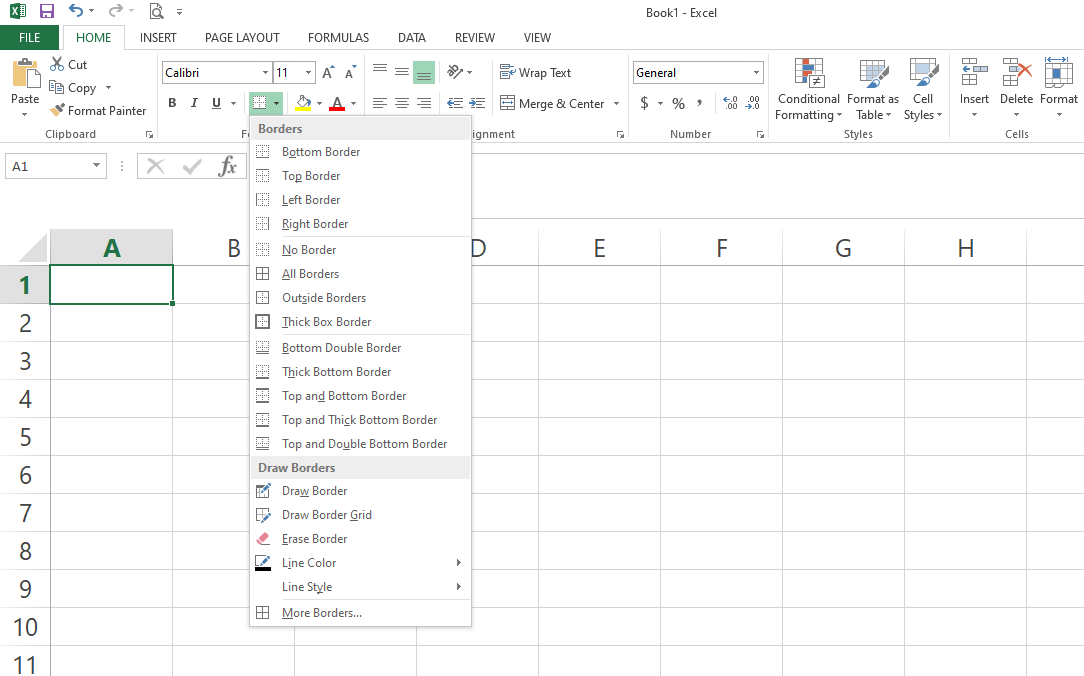
One can divide all available ways to add borders into three different categories. Let’s categorize them for better understanding.
1. Adding Border on One Side
The single side borders named as left Border, right Border, top Border, and bottom border falls in the first category. As the name suggests, selecting each option will add the border to the respective side of the cell.
Single side borders are helpful while separating the information across consecutive rows and columns. Let’s look at the example below.
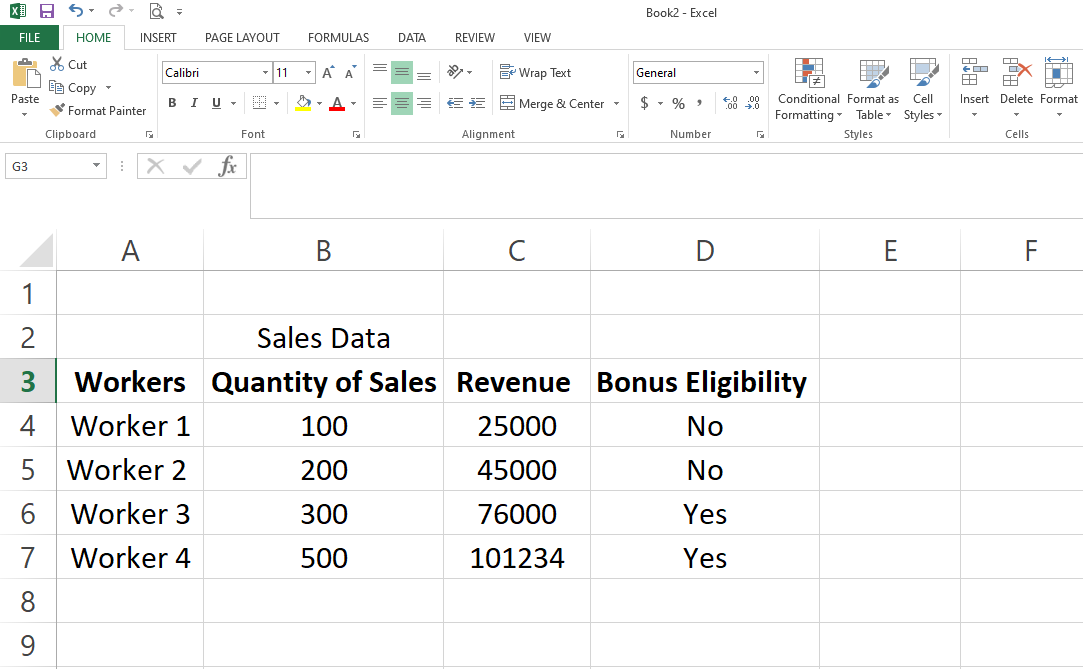
Here, adding a Bottom Border to column 3 from cells A3 to D3 helps separate the actual data in columns 4 to 7 from main field names in column 3. Doing this will make the spreadsheet more visually appealing.
1. Select cells A3 to D3.
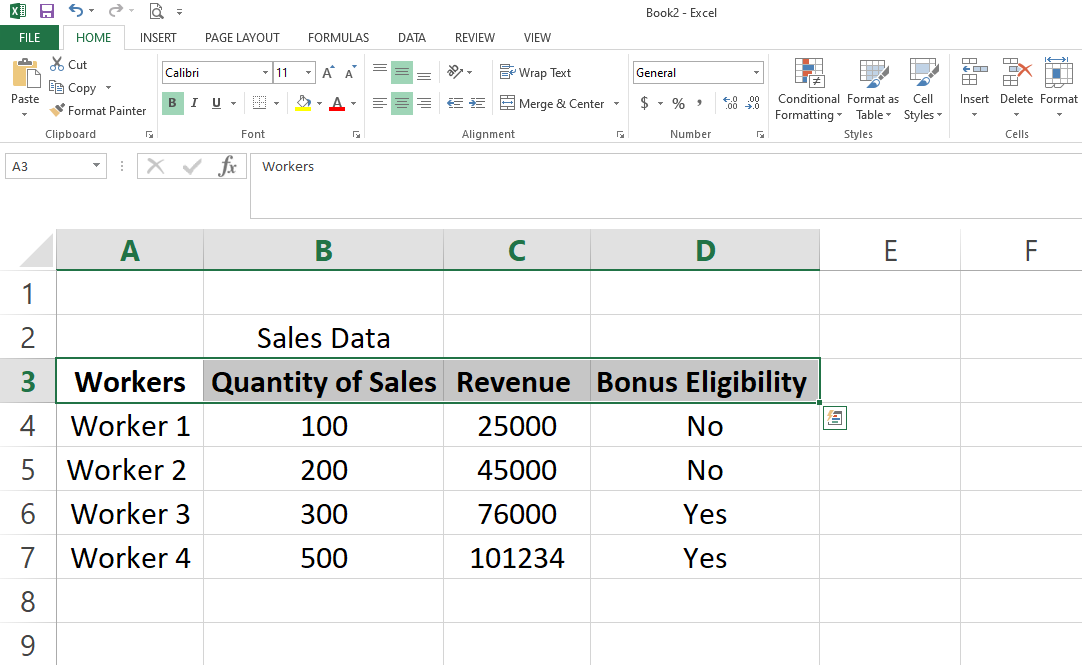
2. Go to the borders dropdown menu and select the Bottom Border.
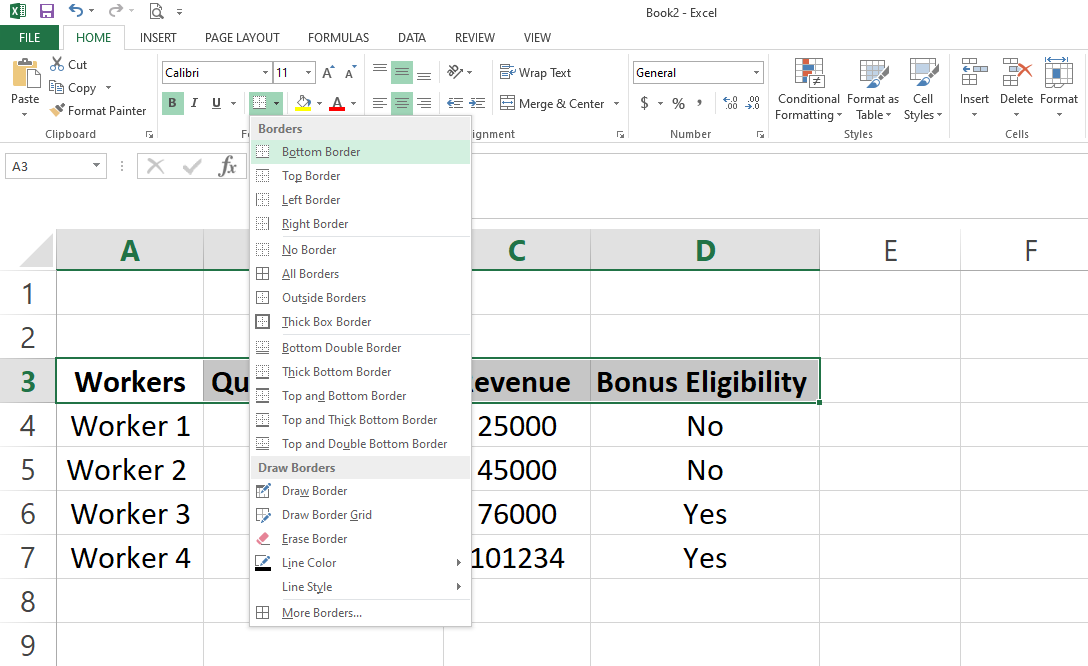
Doing this will assign a bottom border to cells A3 to D3.
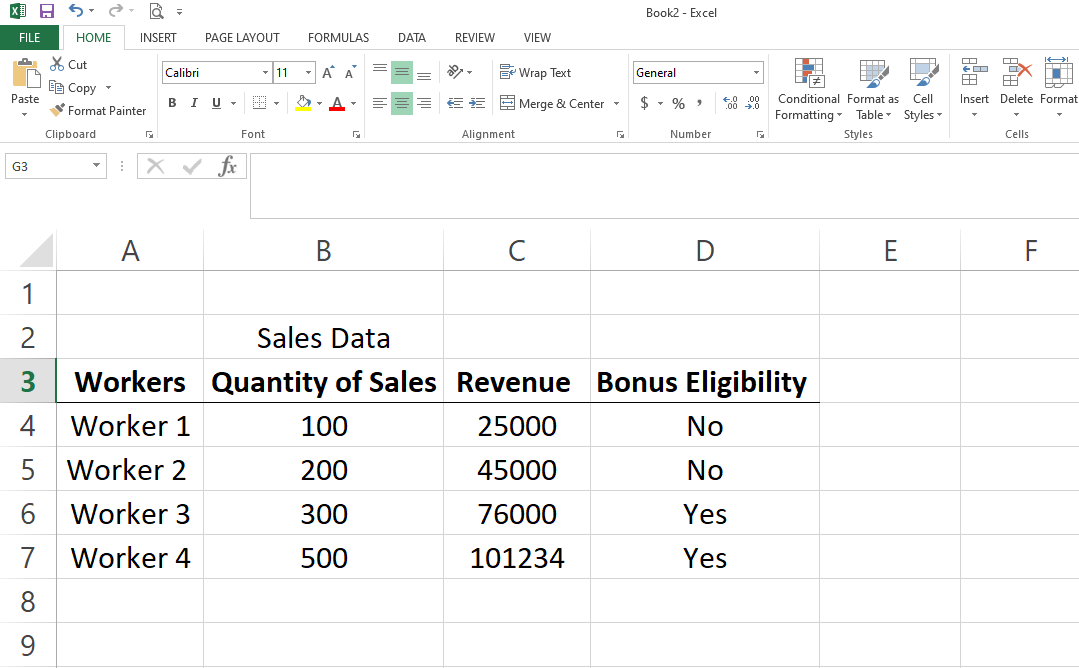
Let’s say you want to add another border to separate column three from two. You will follow the same process of selecting cells A3 to D3 and then adding a border from the dropdown menu. However, you’ll have to use the Top Border in this case.
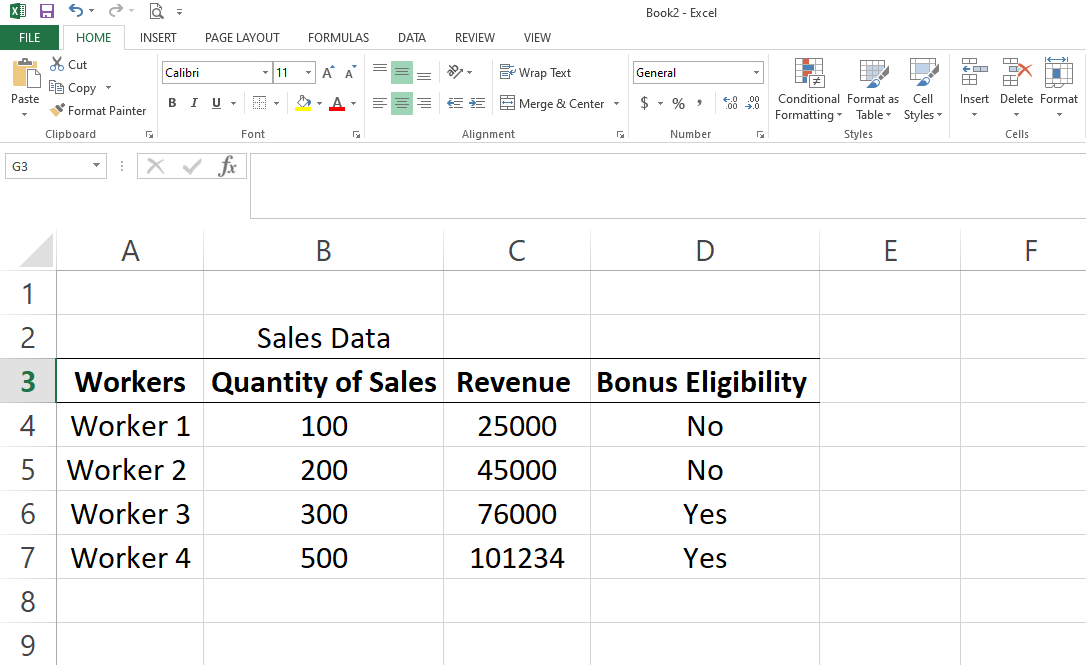
Remember that borders are added to your existing selection. So, once you add a border, it stays there while adding one or more new single side borders to the same selection.
Just like columns, you can separate different rows from each other or individual cells in consecutive rows. You’ll have to follow the same process with varying selections of cells.
Below you can see that adding Left Border across cells D3 to D7 separates data in rows C and D.
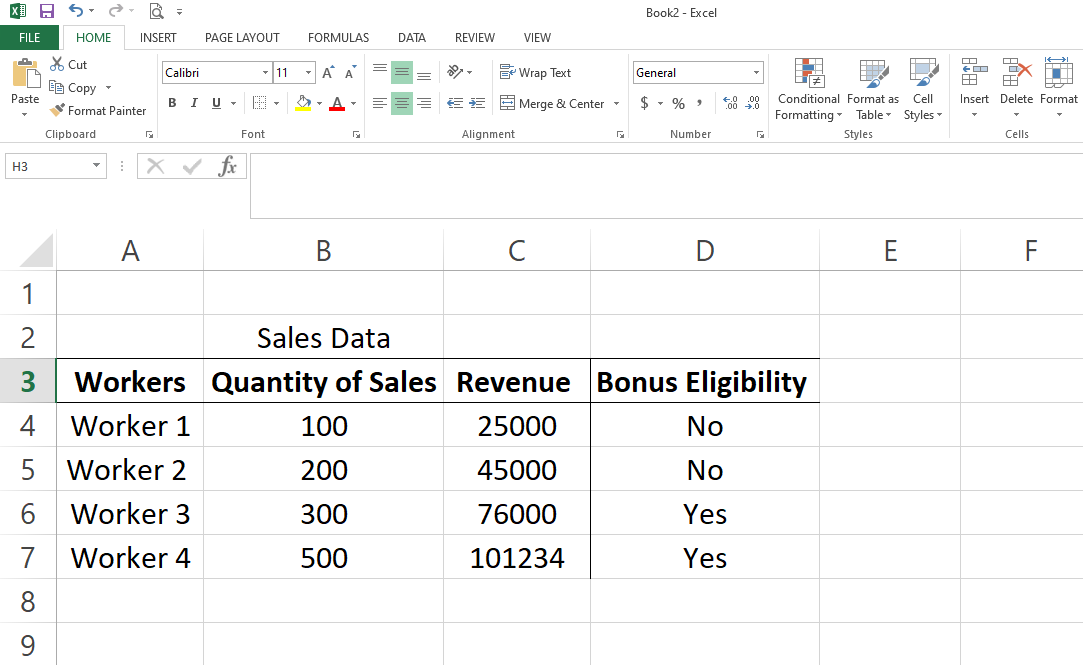
2. Adding Border Across the Whole Cell
In the second category, four-sided borders, users can add borders to four sides of an individual cell or a group of cells at once, without adding borders to each side individually.
In this category of borders, you have three ways to add four-sided borders across cells, with one option to remove the existing border from one or more cells.
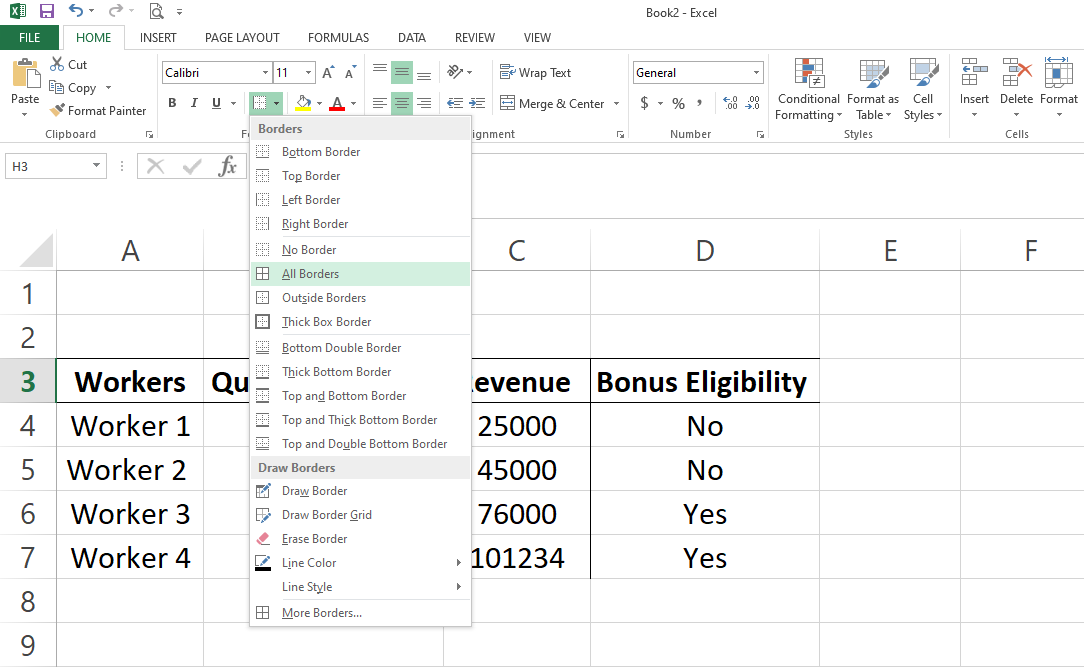
Let’s briefly discuss the purpose of each four-sided border option you have in the dropdown menu of the section of the border.
- No Border: It helps in removing an existing border from an individual or set of consecutive cells.
- All Borders: It adds a border at four corners of a selected range of cells and edges of the adjacent cells.
- Outside Border: It only adds a border at the cell boundary without separating the edges of adjacent cells.
- Thick Box Border: This serves the same purpose as Outside borders. However, the borderline is of higher thickness.
In the below figure, you can see the application of all four side borders discussed above. There is an All Border around cells A5, A6, B5, and B6 and an Outside Border around cells A9 to D9. Likewise, cell A2 is bordered by Thick Box Border.
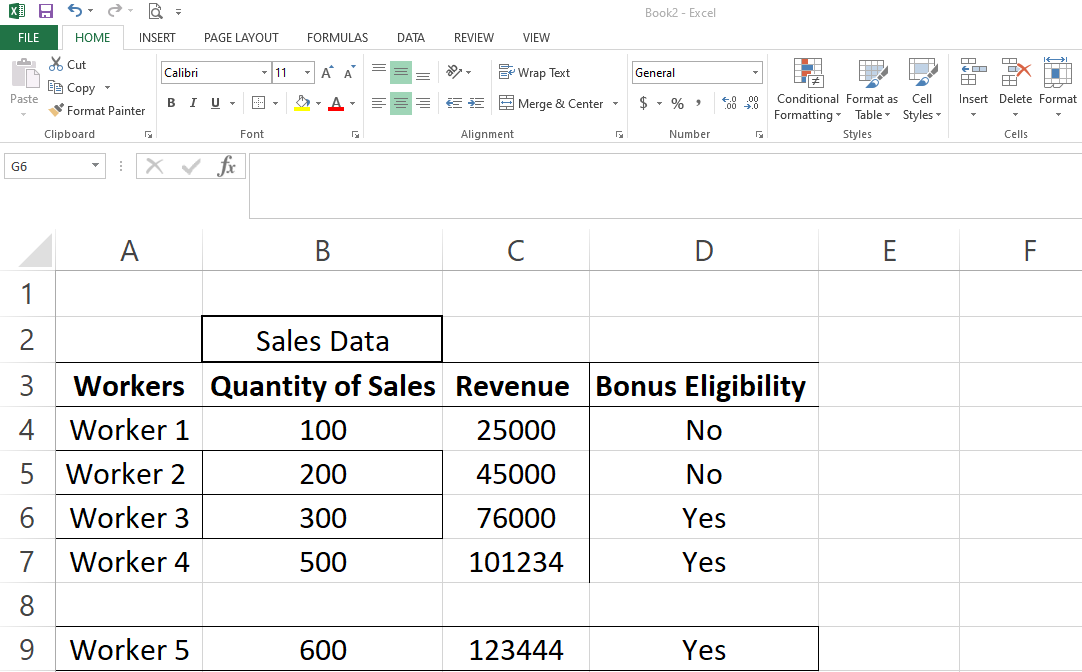
You can remove any of these borders using the No Border option. Select any cell or range of cells and click on No Border.
As you can see below, applying No Border to cell B2 and the range of cells from A9 to D9 has removed any existing borders around the cells.
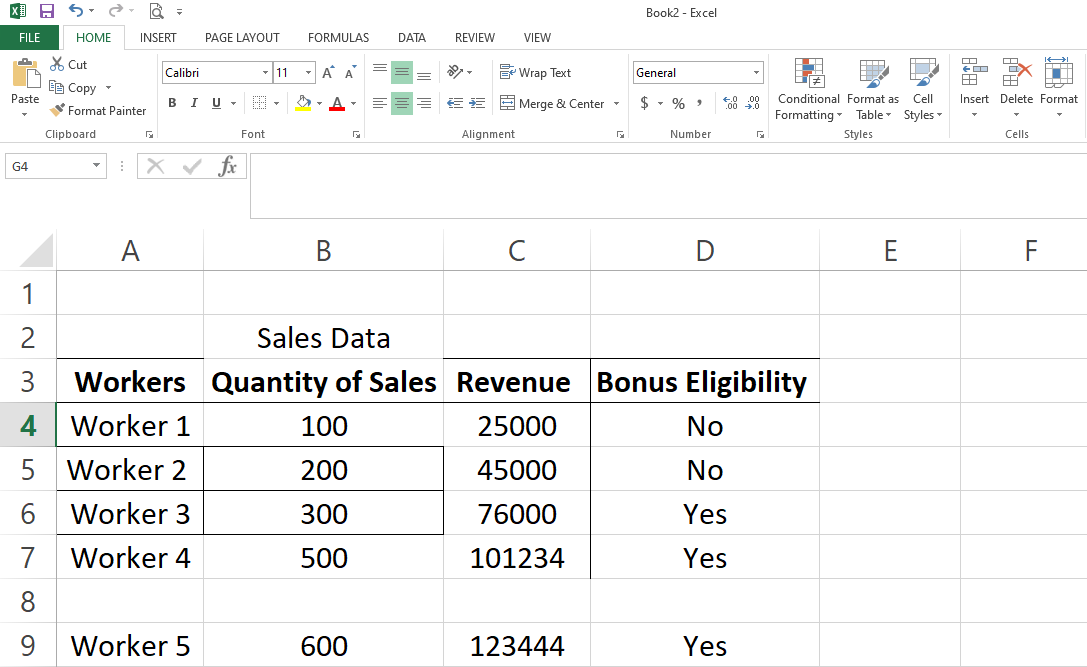
This is an example of the type of control you have in Excel to format how you want the cells to look specifically.
3. Adding Combined Borders
In Excel, you can add other styles of borders like Bottom Double Border, Thick Bottom Border, Top, and Bottom Border, Top and Thick Bottom Border, Top and Double Bottom Border.
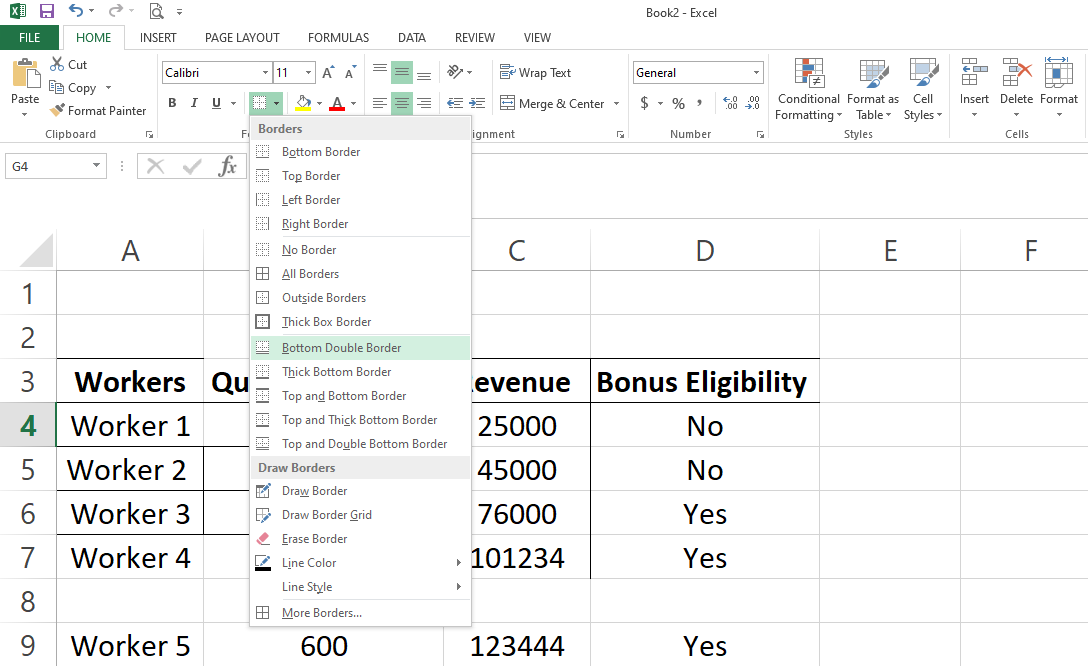
The names for these borders are quite indicative. Try them to see how they change the look of your cells, and you can also use them while formatting your next spreadsheets.
More Borders Options in Excel:
Let’s explore the More Borders option in its dropdown menu.
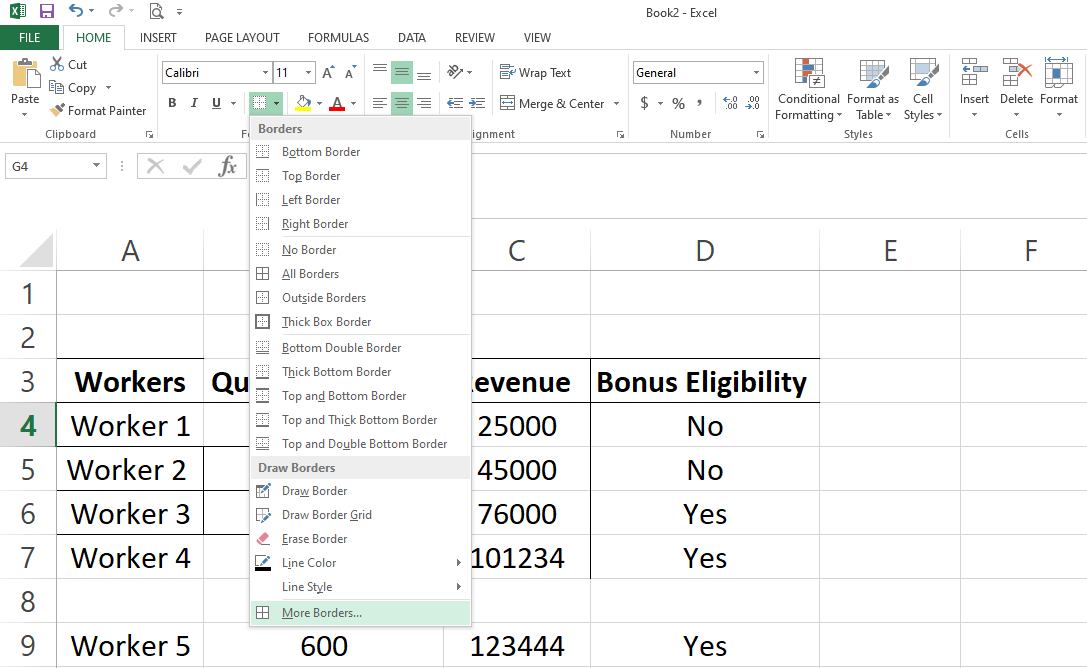
Clicking on More Borders will open up the format cells dialogue box. In the Border area of this dialogue box, you can make few tweaks to align borders around your text data in a single place.
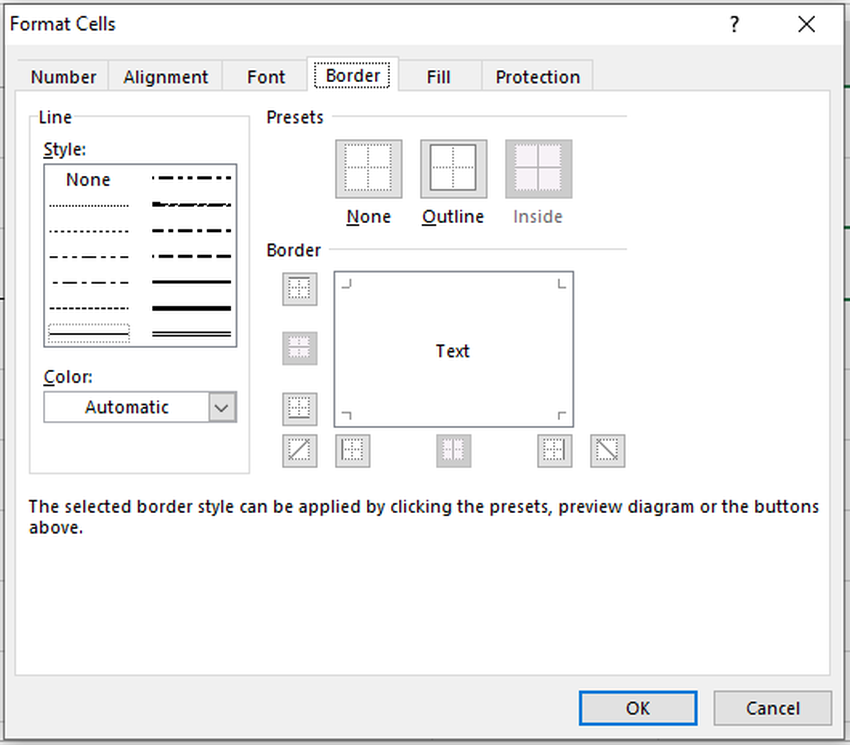
With a handful of options available in the Format Cells Border area, you can have more control while formatting the cells more effectively.
You can select the line thickness you want in the borderline, change its color, and align the borders across different locations around the selected cell.
When you make any changes, you can preview the formatting, in the text box shown above, before actually implementing those changes in your sheet. Let’s explain few settings with the help of an example.
Suppose you want to add a four-sided red color border to cells A7 to D7 with a thick line as an outline of the border. For that, choose the desired line thickness from the Style area and red color from the Color section.
As you want the border to be across all four sides, select right, left, top, and bottom from the border alignment option below Presets section. Once you select these options, you’ll see a preview, as shown below.
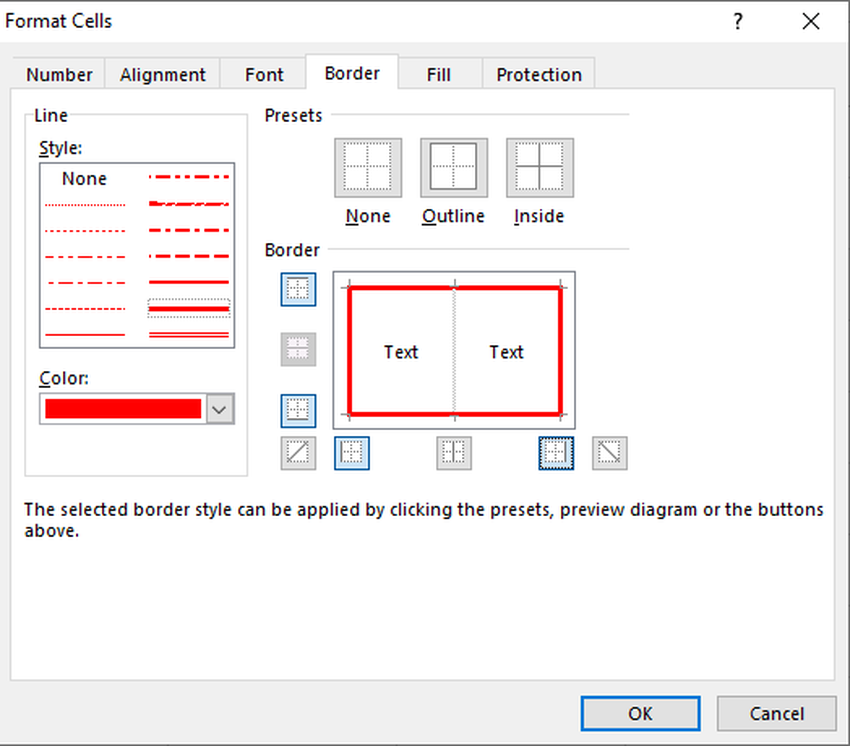
Click OK, and it will implement the format in the preview window on your selected cells in the spreadsheet.
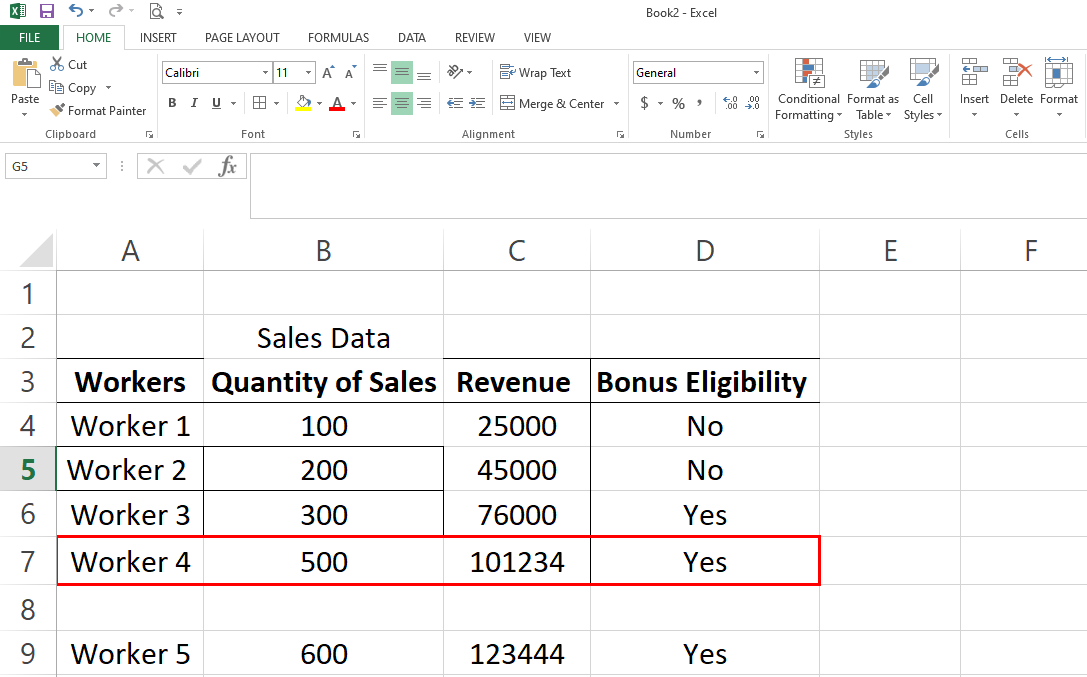
Presets Option in Format Cells Dialogue Box:
You can also choose the preset formats in format cells dialogue box to add Outline Border, Inside Border, and None preset to remove an existing border.
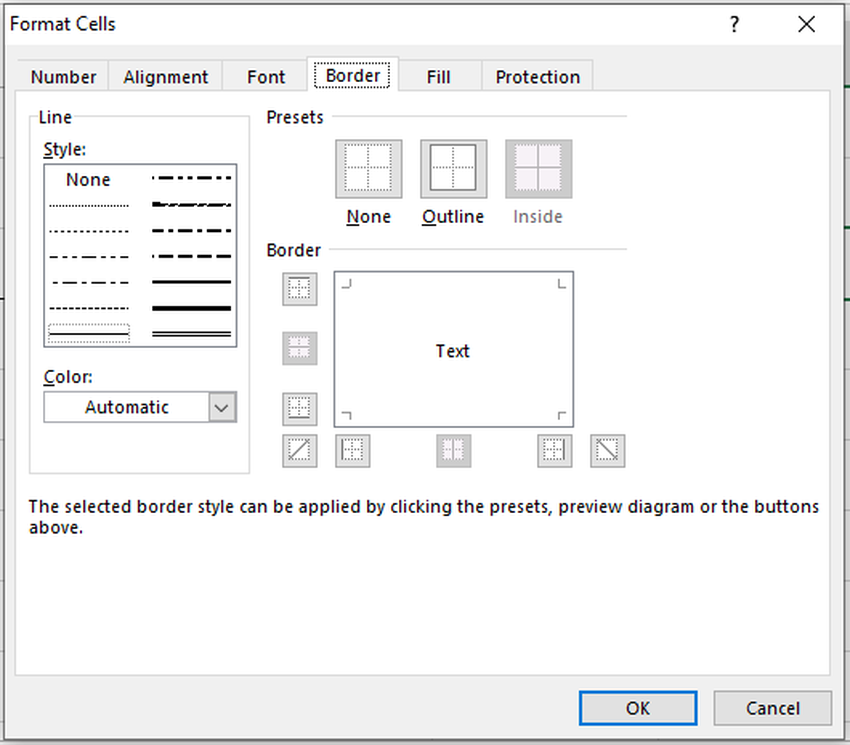
Below you can see how Outline Border, on cells A9 to D9, and Inline Border, on cells A10 to D10, have been implemented in the Format Cells dialog box.
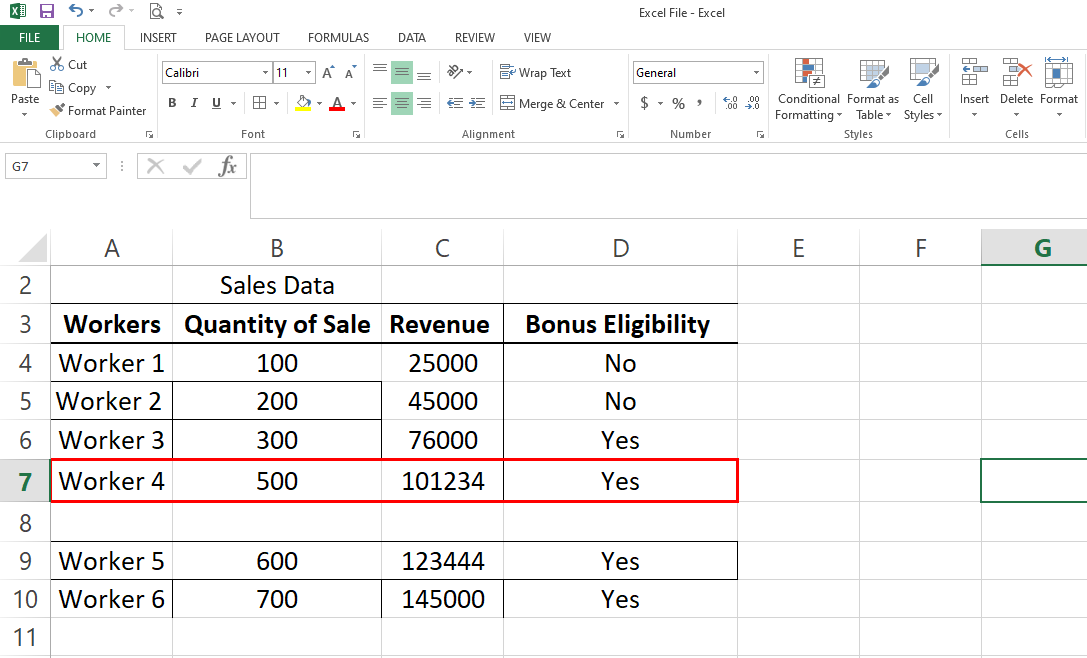
Now, you know how each border setting can help you format the cells. Let’s remove all existing borders and apply different settings to the whole dataset in one go.
Select the whole range of cells from A3 to D9 and click None preset from the dialogue box or No Border option from the dropdown menu.
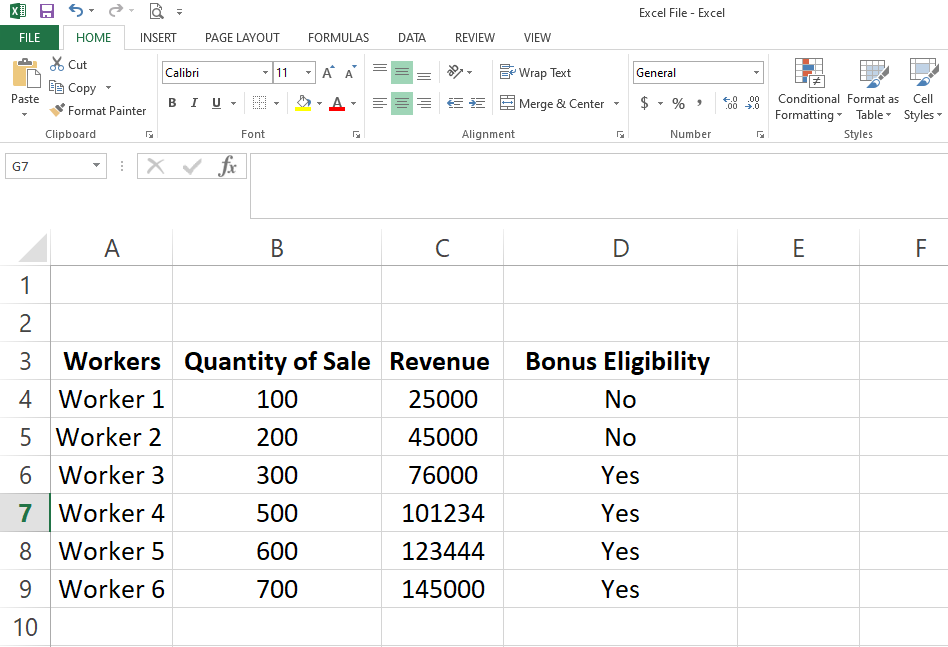
Formatting Cells in One Go
Suppose you want to add a thick blue border on top, a thick black border on the other three sides, and a thin black border inside cell edges. The setting will look like this:
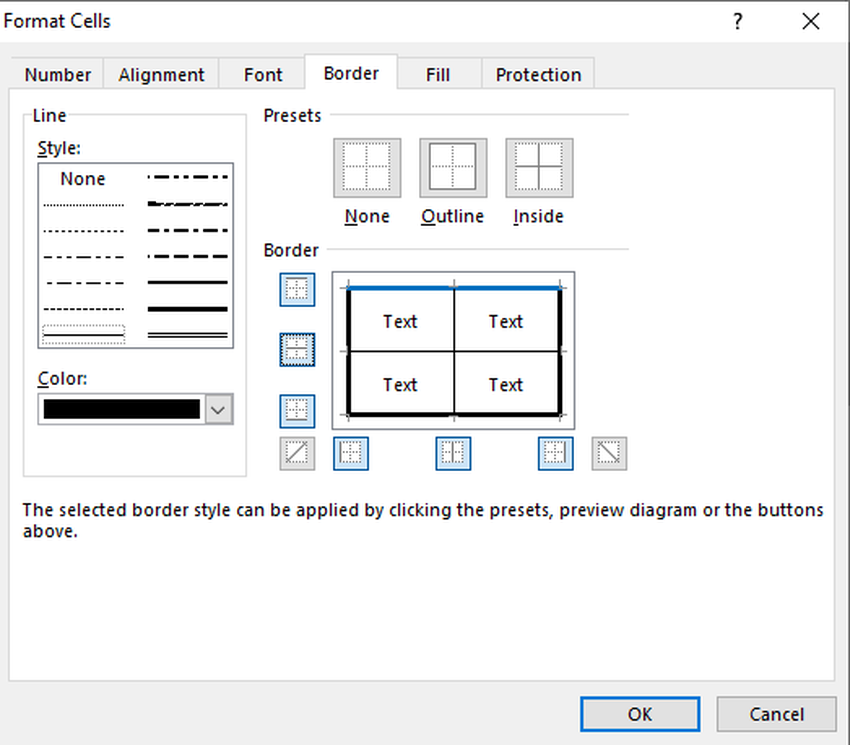
Click OK, and in one go, you will format your entire dataset in one go.
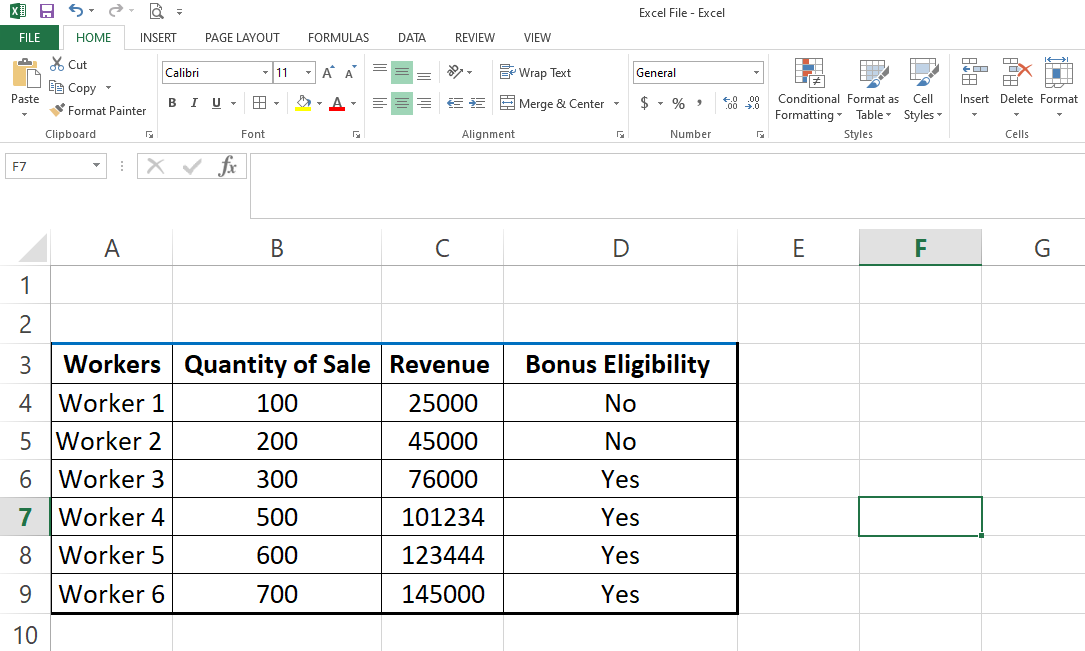
Better Format Borders for Visually Appealing Data
These are a few simple ways to format cells better. There is no perfect or best method to format data that you can use every time.
Always keep it simple and adjust borders as needed to make data easier to understand for users. Ignore a lot of colors and thick borders, as they will distract the users. You can also format charts in Excel to make them more appealing to users.
Home / Excel Basics / How to Add Border in Excel
In Excel, a border is like a four-sided line that is added around the cell or range of cells. It is used to highlight a particular area and separate that from the rest of the values on the spreadsheet. Inserting a border draws the focus of the readers to the specific section, which enhances their interest in it.
In this tutorial, we will look at the ways to add borders along with their different types in Excel.
Steps to Apply Borders to a Cell in an Excel
- First, select the cell or group of cells where you want to add a border in your spreadsheet.
- Then, go to the home tab and in the “Font” group, click on the border button, which is right next to the bold, italic, and underline options.
- Once you click on the drop-down arrow of the border button, it will show you the list of borders.
- Now, select one from the list that you would like to apply around the selected cells.
Types of Borders in Excel
Here, you will learn about the different borders, which are categorized into 4 sections.

In the first section, there are Bottom, Top, Left, and Right borders. These borders will help you apply only one side border around the single or multiple cells. To apply this to the selected values, just click on any type of border.
In the following example, you can see the bottom border under the scale.

The second section has no border, all borders, outside borders, and thick outside border options. You can easily remove the border from the selected cell by clicking on the no border option.

Next, you have the option to add a border to all four sides of the selected cells. But, with all borders, the border lines separate the cell one by one, as shown in the picture below.

The third section contains many bottom borders. Like, as the bottom double border, thick bottom, top and bottom border, top and thick bottom border, and top and double bottom border.

You can use these options in highlighting or underlining important text or headlines.

Draw the Border
In the last section, you have the option to customize or create the border of your choice by using drawing tools. You can also change the existing border with this.

- Draw Border: Once you click the draw border option, it will convert your cursor into the drawing pencil. Now, click on the cell and drag the left mouse button to insert the border. It applies borders in both directions horizontally and vertically.
- Draw Border Grid: From the name justifies, it is also used to draw a border around the selected cells. But the main difference between the “Draw border” and “Draw border grid” is that the border grid draws the borders in the grid form (On Multiple Cells).
- Erase Border: The eraser helps you to erase the unwanted border line from your cells. To erase the border, you just have to drag the eraser on the line to remove it.
- Line Color: The most amazing thing is you can also change the color of the border to make it more attractive. When you click on the line color, then it will open the pop-up with a variety of colors. Once you pick anyone from this, then use the pencil to draw the colorful border.
- Line Style: To change the style of the borderline, click on the line style and choose one from the following styles.
Advanced Border Options
Choose the advanced borders for your selected cells. Follow the below steps:
- First, go to the “More Borders” option, which is at the bottom of the borders list.
- When you click, it will open a new dialog box called “Format Cells”.
- Here, you have more border options to insert on the sheet.
- And, once you select any given preset, it will also show you how it looks after applying it in the box.
- In the end, click “OK” to apply the selected range of cells.
Remove Borders in Excel
- First, you just need to select the area from which you want to remove the border.
- Then, go to the borders list and select the “No Border” option from there.
- Now, the border lines will disappear around the selected cells.
Shortcut to Add Border
There is another way to add a border by using the shortcut. But before using the shortcut, first, you need to select the range where you want to insert the border.
Then, press ALT ⇢ H ⇢ B simultaneously. Once you do this, you will get the list of borders. Along with this, there are some specific options to set any kind of border on a cell or a range.

You would like to set the Thick Bottom Border and the shortcut key for this is H, as you see in the above screenshot. Then, in this case, press ALT ⇢ H ⇢ B ⇢ H after selecting the data.

What are the Borders in Excel?
Borders in Excel are outlined in data tables or a specific range of cells. In Excel, borders are used to separate the data in borders from the rest of the text. It is a good way of representing data. In addition, it helps the user to look for specific data easily. These borders are available in the “Home” tab in the fonts section.
Table of contents
- What are the Borders in Excel?
- Explained
- How to Create and Add Borders in Excel? (with Examples)
- Example #1
- Example #2
- Example #3
- Example #4
- Things to Remember While Creating Borders in Excel
- Recommended Articles
Explained
We can add the border to a single cell or multiple cells. Borders are of different styles and can be used as per the requirement.
Borders help present the data set in a more presentable format in ExcelFormatting is a useful feature in Excel that allows you to change the appearance of the data in a worksheet. Formatting can be done in a variety of ways. For example, we can use the styles and format tab on the home tab to change the font of a cell or a table.read more.
We can use borders for tabular format data or headlines to emphasize a specific set of data or can be used to distinguish different sections.
- We can use it to define or divide the sections of a worksheet.
- We can use it to emphasize specific data.
- We can also make the data more understandable and presentable.
You are free to use this image on your website, templates, etc, Please provide us with an attribution linkArticle Link to be Hyperlinked
For eg:
Source: Border in Excel (wallstreetmojo.com)
How to Create and Add Borders in Excel? (with Examples)
We can create and add borders to the specific set of data.
Example #1
We have data of marks of a student for three subjects of an annual examination. We will have to add the borders in this data to make it more presentable.
- Now, we must select the data we want to add to the borders.
- In the font group on the “Home” tab, click the down arrow next to the “Borders” button. You may see the drop-down list of borders, as shown in the figure below.
- We have different borders styles. Therefore, we may select the “OUTSIDE BORDERS” option for our data.
- We may find the result by using “OUTSIDE BORDERS” in the data.
Now, let us learn with some more examples.
Example #2
We have data of marks of a student for three subjects of an annual examination. We will have to add the borders in this data to make it more presentable.
- Data of marks of 5 students for three subjects in an annual examination is shown below.
- Now, we must select the data we want to add to the borders.
- Now, in the “Font” group on the “Home” tab, we need to click the down arrow next to the “Borders” button. As shown in the figure below, we may see the drop-down list of borders.
- Now that we have different border styles, we must select the “THICK OUTSIDE BORDERS” option for data.
- As a result, we may find the result by using “THICK OUTSIDE BORDERS” to the data shown below.
Example #3
We have data on the marks of a student for three subjects of an annual examination. We will have to add the borders in this data to make it more presentable.
- Data of marks of 5 students for three subjects in an annual examination is shown below.
- Now, select the data to which you want to add borders.
- Now, in the “Font” group on the “Home” tab, we may need to click the down arrow next to the “Borders” button. And we may see the drop-down list of borders as shown in the figure below. Then, select the “ALL BORDERS” options for the data.
- As a result, we may find the result by using “ALL BORDERS” to the data.
Example #4
We have data on the marks of a student for three subjects of an annual examination. We need to add the borders in this data to make it more presentable.
- Data of marks of 5 students for three subjects in an annual examination is shown below.
- Now, we must select the data we want to add borders.
- Now, in the “Font” group on the “Home” tab. Then, we need to click the down arrow next to the “Borders” button. As shown in the figure below, we may see the drop-down list of borders. Now, select the “ALL BORDERS” options for our data.
- We may now find the result using “ALL BORDERS” in the data.
- As shown in the figure below, we can change the border’s thickness per the requirement. Select the data you want to change the border’s thickness for this.
- We need to go to the border drop-down list and click “LINE STYLE.”
- Now, we get a list of line styles and use the style as per the requirements. We will use the second last line style for our data.
- We may get the result as shown below.
Things to Remember While Creating Borders in Excel
- We select cells where the border needs to be added.
- The borders differentiate the data separately.
- We can change border styles by the “Borders” icon in the “Font” tab.
Recommended Articles
This article has been a guide to Borders in Excel. Here, we discuss how to create/add cell borders in Excel using different options and examples. You may also look at these useful functions in Excel: –
- Borders in VBA Excel
- VBA Select Cell
- Shortcut for Excel Format Painter
- Format Number in VBA
- Marksheet in Excel
Reader Interactions









 , and then click a border style.
, and then click a border style.
 are available under Border.
are available under Border. .
.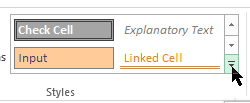
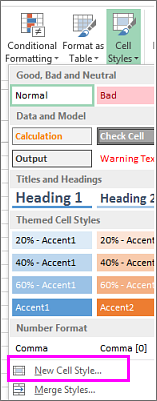
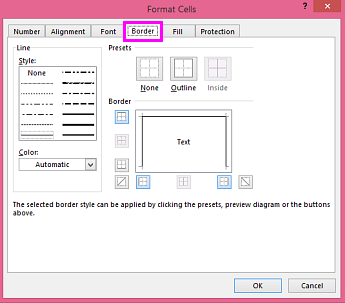
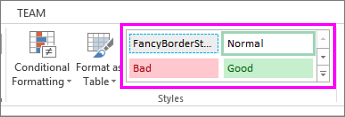
 .
.